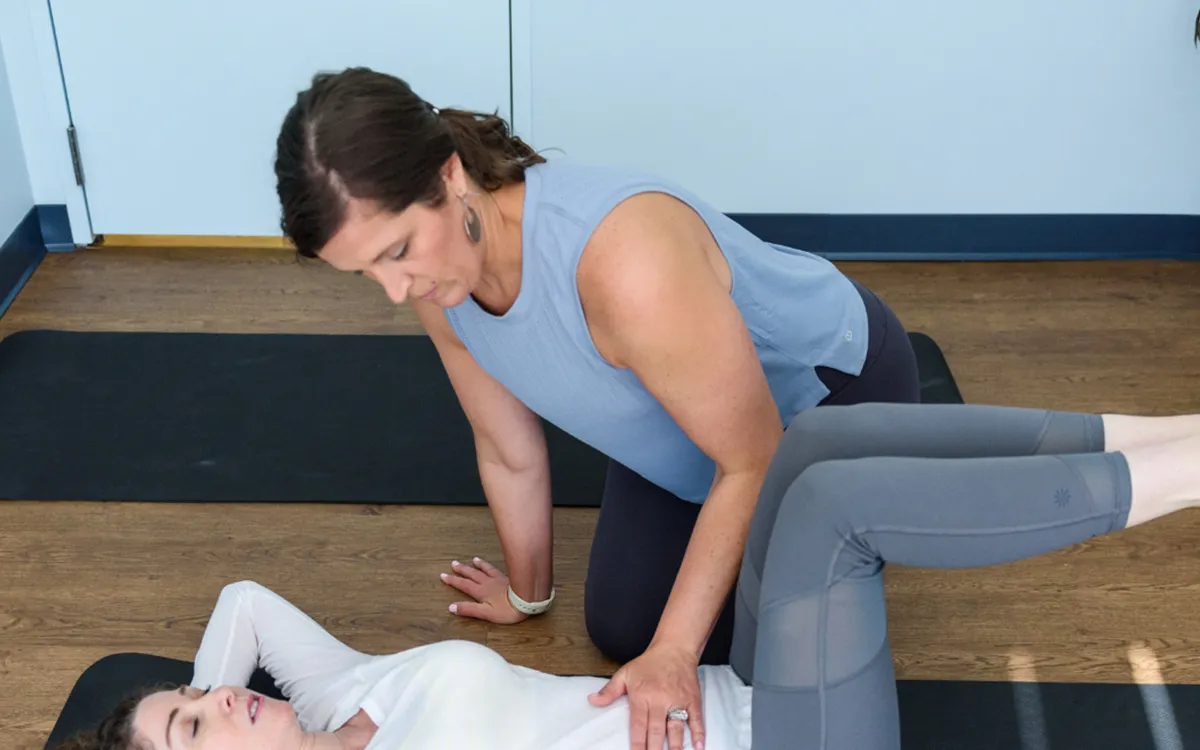Hip & Knee Pain in Cincinnati
Your hips and knees are the largest joints in your body. While many people may experience hip pain or knee pain on their own, it is also common to experience them together as well. You may first notice hip pain on the outside area of the hip, along the outer buttock or upper thigh area. Hip pain can occur whether you are at rest, walking or during any other type of physical activity. Knee pain is another very common reason why people visit our physical therapist each day. In addition to chronic pain, other common symptoms of knee pain include stiffness, swelling popping, and general instability. Many physical therapy patients also find that it is difficult or even impossible to fully straighten the knee as well. If you are experiencing hip pain or knee pain, call our offices today to schedule a free physical therapy consultation.

What Are the Common Causes of Hip and Knee Pain?
Although the hip joint is very durable, it can become worn down over time due to age or overuse. As the hip joint becomes more worn down, you are much more likely to experience chronic hip pain. Additionally, a slip and fall can cause the bones in the hip to break and arthritis affects the cartilage in the hip as well.
Some other common causes of hip pain include:
- Bursitis
- Tendinitis
- Hip fractures
- Work injuries
- Tendon or muscle strain
- Certain Cancers
- Osteonecrosis
- And more
Like hip pain, knee pain is often associated with the normal aging process or overuse. However, chronic knee pain can also be the result of damage to the bony structures that make up the knee joint like the fibula, tibia, and femur. Damage to the cartilage and ligaments can also send patients to the physical therapist in search of fast pain relief. Other common causes of knee pain include:
- Arthritis (Osteoarthritis, Rheumatoid arthritis, etc.)
- Sports injuries
- Auto accident injuries
- Torn meniscus
- Medial plica syndrome
Additionally, if the knee joint somehow becomes dislocated due to a sport or work injury, it can result in lasting knee pain.
How Does Physical Therapy Cincinnati Help Treat Hip and Knee Pain?
If you suffer from ongoing hip or knee pain, physical therapy can help to manage your pain while restoring strength and improving your overall mobility. This safe, effective and non-invasive treatment method is also prescription drug-free, making it ideal for patients of all ages. Studies have shown that the manual techniques and mobilizations used in physical therapy can not only reduce hip and knee pain but reduce inflammation, restore your natural range of motion and strengthen the hip and knee joints.
Our physical therapist will work closely with you to design a physical therapy treatment plan that fits your individual needs. By targeting the root cause of your chronic pain instead of simply treating your symptoms, you can enjoy fast pain relief. For better results, our physical therapist may also recommend using both at-home exercises and passive treatments like heat and ice therapy or electrical stimulation to reduce your chronic pain. While other more invasive treatment methods may call for surgery to relieve your hip and knee pain, this holistic treatment option is safe and gentle. In fact, many people who do end up electing to have surgery to correct a hip or knee injury will still need to use physical therapy to recover and reduce pain.
FAQs
How do I know if my hip or knee pain is serious enough to see a physical therapist?
You should get evaluated if your hip or knee pain lasts more than a few days, keeps coming back, or makes it difficult to walk, go up and down stairs, stand, exercise, or sleep. Swelling, stiffness, catching, locking, or a feeling that the joint might “give out” are also signs you should not just wait it out. At WAVE Physical Therapy & Pilates in Cincinnati, our therapists can help you figure out what is causing your pain and whether physical therapy, imaging, or a referral to another provider is most appropriate.
What are the most common causes of hip and knee pain that you see at WAVE?
We frequently see hip and knee pain from arthritis, overuse, tendonitis or bursitis, muscle and tendon strains, meniscus problems, iliotibial band issues, patellofemoral pain, and injuries related to sports or work. Sometimes pain comes on suddenly after a twist, fall, or awkward movement; other times it builds gradually over months from repeated stress or poor movement patterns. Your WAVE therapist will assess your strength, mobility, alignment, and habits to identify the main contributors to your pain.
Can physical therapy help me avoid hip or knee surgery, or is it only for after surgery?
In many cases, physical therapy can help you delay or even avoid surgery by improving joint mobility, strength, and alignment while reducing pain and inflammation. We focus on addressing the root causes—such as stiffness, weakness, and movement mechanics—to take stress off the joint. If you and your surgeon decide that hip or knee surgery is still the best option, therapy before and after surgery can help you recover faster, move better, and get back to daily activities more confidently.
Is it safe to exercise or walk if I have hip or knee pain?
Completely avoiding all movement is rarely the best long-term solution. In most cases, the right kind of exercise is helpful for hip and knee pain, as long as it is properly dosed and guided. At WAVE, we show you which activities are safe to continue, which ones to modify, and which to temporarily avoid. Your plan may include targeted strengthening, flexibility work, balance training, and low-impact conditioning to support healing without flaring your symptoms.
How long does it take to feel better with physical therapy for hip or knee pain?
Recovery time depends on the cause of your pain, how long it has been present, and your overall health and activity level. Some people with mild, recent pain feel improvement within the first few visits. Others with arthritis, post-surgical pain, or long-standing issues may need several weeks of consistent therapy. A common starting point is 1–2 sessions per week for 4–8 weeks, combined with a home program. At your initial evaluation, your WAVE therapist will outline a realistic timeline and key milestones based on your specific goals.
Common Knee Conditions We Treat in Cincinnati
ACL Repair, Meniscus Repair, Total Knee Replacement
Knee surgeries are common for major injuries. Physical therapy treatment will allow you to recover quickly and safely following surgery.
Iliotibial Band Syndrome (ITBS)
Overuse of connective tissues that are located on the outer part of the thigh and knee is called Iliotibial Band Syndrome. It causes pain and tenderness in those areas, especially just above the knee joint. ITBS is the most common cause of lateral knee pain in runners and cyclists.
Runner’s Knee/Jumper’s Knee
Jumper’s knee is often seen in people who do lots of jumping (i.e. basketball, volleyball, racquet sports, track and field). Pain is typically felt just below the knee cap, partly on the bone and partly on the tendon. Runner’s knee pain is felt on the sides or under the knee cap.
Meniscus Disorders
Any activity that causes you to forcefully twist or rotate your knee, especially when putting your full weight on it, can lead to a torn menisucs. Physical therapy has a high success rate of helping avoid surgery with meniscus injuries.
Learn More About the Benefits of Physical Therapy for Hip and Knee Pain
If you or a loved one is suffering from a debilitating hip or knee injury, physical therapy can help! Our experienced physical therapist has the tools necessary to create a tailor-made treatment plan that will quickly help to reduce your pain and support natural healing without the use of prescription pain medications. Contact our friendly team online today for more information or to schedule an initial consultation.



